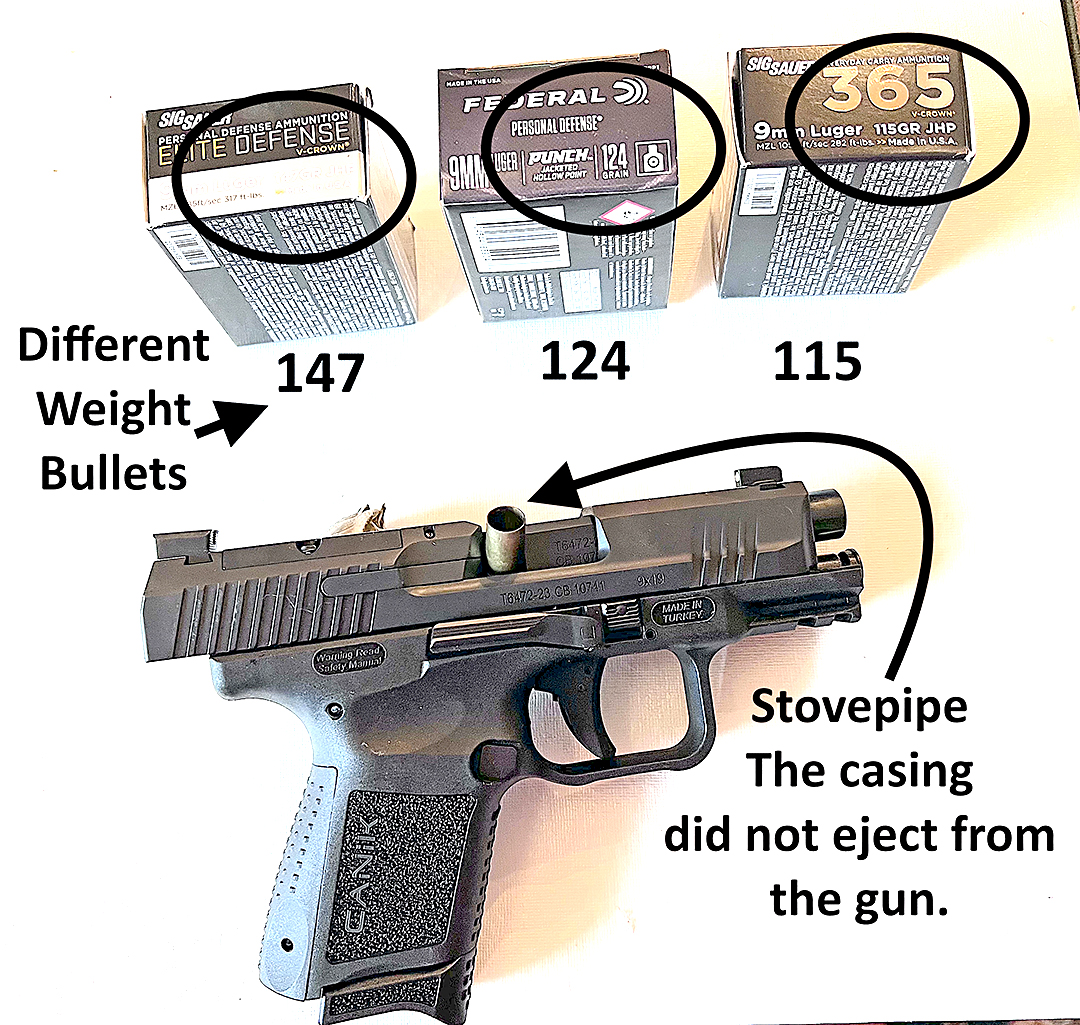New semi-auto handguns that don’t work right

By MARJ LAW

Over the last more-than-decade, I’ve seen brand new handguns that just didn’t work right from at least six reputable manufacturers. What’s with that?
Failure to feed, failure to fire, failure to extract, failure to eject, stovepipes, pips… All these frustrating things can happen to new guns.
You’ve shelled out several hundreds of dollars. What do you do?
Since Joe and I belong to the Wakulla County Sheriff’s Office (WCSO) range, and if we haven’t figured an answer, we’ll go to the range office. The deputies behind the desk have seen a lot and have a tremendous wealth of knowledge about guns. They’re really approachable and happy to share what they know. Talking it over with one of the deputies is a fine first step.
One of them may have an answer. But sometimes, it’s the gun. There’s a mechanical problem.
It’s fortunate that every one of the manufacturers I mentioned above guarantee their new guns. Yes, you do have to send it back, and no, unlike a car, you don’t get one to use while you wait. Drat.
Waiting can take from 2 to 6 weeks in most cases. When you return your gun, be sure to put in a cover letter what you observed when you tried to shoot. Remember to include your address, email and phone number. And really importantly, include the serial number of your gun.
When your gun is returned, the manufacturer’s repair person indicates what he/she discovered and what was accomplished to ameliorate the problem.
Did you figure the problem out yourself? Did you take your new gun to the gunsmith you like? Unhappily, messing with the gun without sending it back to the original manufacturer can void your warrantee. With something this expensive, you don’t want to void your warrantee.
Most gun sellers and manufacturers will suggest a “break in” period for your new gun. This means they want you to shoot 200-300 rounds through it. Running ammunition through your gun may work minor kinks out.
Maybe not.
Some handguns are picky about ammunition. You’ll notice if you’re buying a 9mm round for example, that it’s usually possible to find it in 115, 124 or 147-grain bullet weight. Your gun may balk at a lower or higher-grain bullet. Try a few of each to find what your gun likes best.
Picky? Some guns prefer certain brands of ammunition. Go figure. Try out a few before you decide there’s a real problem with your gun.
Feel up your ammunition. Rounds from one brand we’ve tried recently have a waxy, sort of sticky coating. We bought several boxes of them and they all felt gross. The gun thought so, too and didn’t shoot well. We got rid of those.
Seems like .22s are particularly particular. .22 rounds tend to be smoky and dirty, and the powder can be inconsistent. Joe says to watch out for some of the foreign brands. These rounds can leave a lot of lead in your barrel. Did you shoot a bunch and then notice the gun was beginning to have problems? Clean the .22 handgun and try again. If cleaning’s your problem, it’s easily addressed.
If you’re adept at ferreting out problems with any caliber of handgun, look up your gun on the internet. If you’ve had a problem, maybe others have experienced it as well. They may have answers for you.
Recently, I was shooting a 9mm handgun and it wasn’t working well. Joe thought it might be a recoil spring problem. What? In a new gun?
This was not addressed in the owner’s manual.
Joe thought the recoil spring might be too heavy for the ammunition we were using. I generally purchase 124-grain rounds for my 9mm guns. While the gun can certainly be used for defense, I was shooting at paper targets and didn’t need super-duper strong rounds. The gun wasn’t shooting well.
We fieldstripped the gun. For some reason, the recoil spring was painted red at one end. Why was that?
Well, come to find out some 9mm guns are meant primarily for law enforcement or military defense. They expect a defensive round such as a hollow point, NATO or a +P will be shot in these guns. When you fieldstrip your gun, look at the end of the recoil spring. You may see a spring with red painted on one end. This is a spring you’ll want when shooting those strong rounds.
On the other hand, if you plan to use your gun for lighter target loads, like I was using that day, you may need a blue-tipped recoil spring inside.
When we saw the red tipped spring in our target gun, Joe thought the color might be a clue. He came up with the thought that the red on the spring might be indicative of strength. Sure enough, when we talked to John in the range office, he had found out that same information on the computer. Apparently, red springs are for the hotter loads, and blue springs are for the lighter ones.
Who knew? Yes, it would have been helpful to have seen this information in the manual.
Is your problem a stovepipe? This is when the casing of your spent round is standing straight up in the ejection port. Looks like a stovepipe. It didn’t get ejected from the gun.
Drop the magazine and pull back the slide to let the casing out. Check the chamber to make sure it is empty too.
Try shooting again. Another stovepipe? Try again. Does it keep happening?
Ask a few experienced friends to shoot your gun. This is important. If three friends get stovepipes too, then you won’t be accused of “limp-wristing” your gun. If you’re accused of limp-wristing, generally someone means you’re not holding the gun sufficiently firmly and that you, quite frankly, can’t handle your gun.
You don’t want to hear those words. If several people have the same problem, it’s not you. It’s the gun. Send it back to the manufacturer.
Sometimes a brand new semi-automatic handgun doesn’t work well. If you are going to send it back, remember to send it to the manufacturer and not to the gun shop that sold it. The warrantee is with the manufacturer.
The downside is that you’ll be parted from your new gun for a while. The upside is that we’ve found the manufacturers to be honest.
Try to be patient. You will get your gun back.
Marj Law is the former director of Keep Wakulla County Beautiful who has become an avid shooter in retirement.
